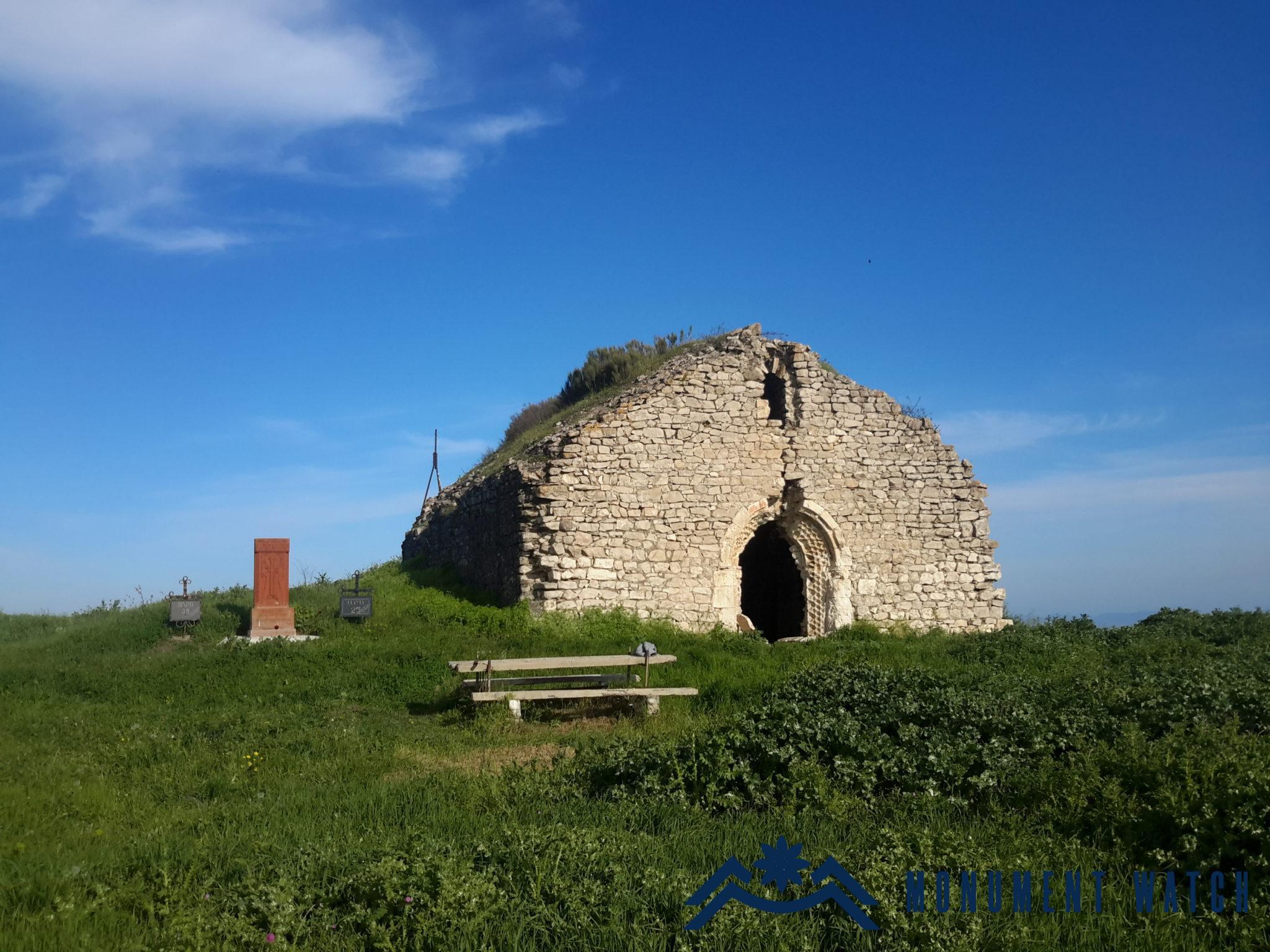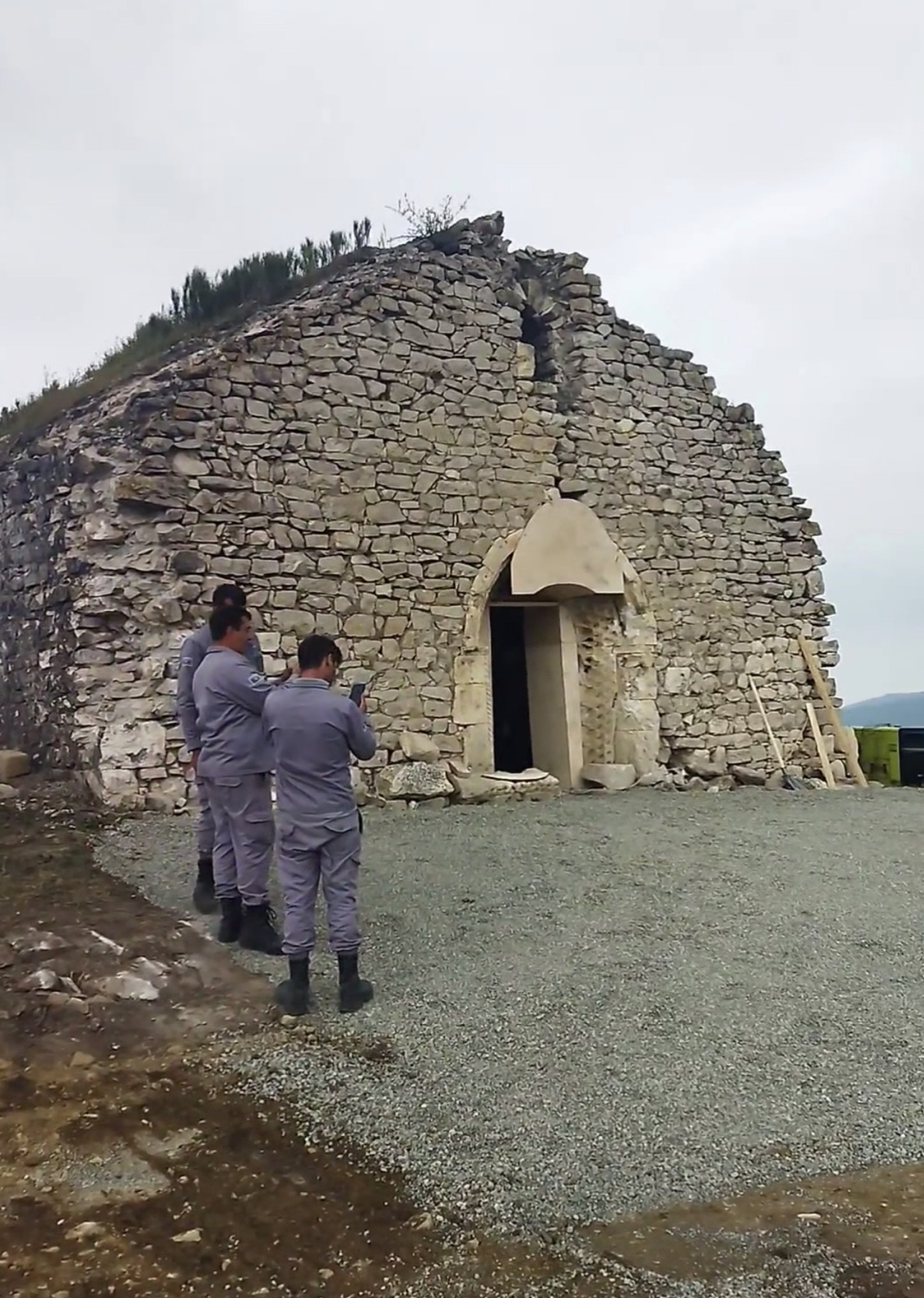Alert: The Kavakavank Church is Losing its Original Appearance
Based on videos shared on the internet by an Azerbaijani user, it is evident that construction works are underway within the premises of the Kavakavank monastery complex in the occupied Hadrut region (Агибат Гасанов - Füzulidə Məngənə dağı və məşhur alban... | Facebook).
The monastery is situated on a hill, distinct from the plain to the left of the road that connects Togh to Varanda (Fizuli) (for additional details about the monastery, please visit https://monumentwatch.org/en/monument/kaqavavank-monastery/).
During October 12-14, 2020, intense battles occurred around Kavakavank, and the area was subjected to shelling. The Azerbaijani military occupied the church and utilized it as a military base, leading to significant damage and destruction of the structure's ornaments and Armenian inscriptions. There was no available information about the church's condition following the 44-day war until these videos emerged.
From the video, it is evident that the church and its surroundings have suffered extensive damage from enemy shelling, with collapsed sections, fallen and scattered stones, and a damaged roof. These damages were not present before the 2020 war. Furthermore, the soldiers, who utilized the church as a military base, left numerous writings in the Azerbaijani language across different parts of the church, as depicted in the video. The khachkar dedicated to the memory of the liberators of the area, which was placed next to the church in 1995, has disappeared. The Khachkar was likely destroyed by the Azerbaijani troops. It is important to note that the Azerbaijani side openly expresses hostility towards crosses, khachkars, and other memorials, as well as newly built churches in the region since 1994.
The footage shows that the Azerbaijani side has flattened the ground around the church and constructed earthworks. According to the equipment in the video, a new paved road to the church is being constructed. The works inside the church and on the porch are more concerning. Judging by the video, the porch is significantly damaged, with the ornate moldings almost gone. Additionally, it appears to be a cheap propaganda trick to declare the church (https://monumentwatch.org/en/monument/kaqavavank-monastery/), built by Armenians in 1742 and bearing Armenian inscriptions, as Albanian.
The Azerbaijani side appears to be carrying out restoration works on the church, but the most concerning aspect is the potential distortion of its authentic historical appearance. There are fears that the restoration process may lead to the desalinization of the church under the pretext of restoration and the so-called "Albanization". The Azerbaijani side, including statements made by the country's president, has consistently claimed that the Armenians "Armenianized" the "Albanian" monuments in the occupied territory of Artsakh during their years of control. They have expressed their intention to restore these monuments to their original appearance, which raises concerns about the potential removal of cross compositions, khachkars, and most importantly, Armenian inscriptions (for more information, see: https://monumentwatch.org/en/alerts/the-statement-of-the-president-of-azerbaijan-on-the-church-of-tsakuri/).We also observe this danger in the case of the "construction works" at the Kavakavank church
Our response
It should be noted that, according to the 1954 Hague Convention for the Protection of Cultural Property in the Event of Armed Conflict and its 1954 and 1999 Protocols, it is strictly prohibited to use cultural property, as defined by the convention, for military purposes. Article 6 of the 1999 Second Protocol of The Hague also explicitly forbids the conversion of cultural property into military targets or using them in a way that may expose them to the risk of destruction or damage. Furthermore, such an act is classified as a war crime under Articles 15(c) and 15(d) of the Second Protocol. When cultural heritage is employed for military reasons, it loses the extra protection provided by the preceding convention and becomes a civilian object.
It should also be noted that the International Court of Justice at The Hague, in its decision on December 7, 2021, prohibited the desecration of Armenian churches. "Azerbaijan is obliged to take all necessary measures to prevent and punish acts of vandalism and desecration that were carried out against the Armenian cultural heritage..." (International Court of Justice, Application of the International Convention on the Elimination of All Forms of Racial Discrimination (Armenia v. Azerbaijan), 7 December 2021, No. 2021/34).
Additionally, according to PACE Resolution 2583, the denial of Armenian cultural values and their alleged belonging to the Caucasian Albanians was recognized as an "Azerbaijani fiction" (Parliamentary Assembly of the Council of Europe, Humanitarian consequences of the conflict between Armenia and Azerbaijan / Nagorno-Karabakh conflict, Resolution 2391 (2021), Article 18.4).



